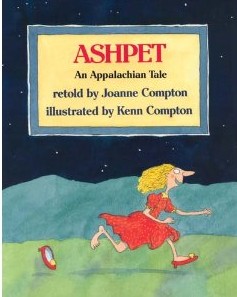
“Cinderella” is another of those fairy tales that we all know or at least think we do. It’s also a story that’s been told in countless countries in countless ways.
I read a few versions this week. The one I was most familiar with was written by Charles Perrault around 1697. His story includes the evil stepmother, the fairy godmother, the pumpkin and animals being turned into the coach and servants, the glass slippers. The father is alive, just not present in the story. These fairy tale fathers and their lack of any kind of backbone is astonishing. How he could let his only child, the daughter of his dead wife, be abused in his own household, given the most menial chores, be lower than a servant?
I also read a Grimm’s version, which is entirely different, not the story I knew. Cinderellas’ mother dies and on her deathbed she promises,
“Dear child, remain pious and good, and then our dear God will always protect you, and I will look down on you from heaven and be near you.”
And Cinderella is good, kind, visits her mother’s grave everyday and when her father remarries does all the work she is required to, puts up with every hurtful thing her pretty, mean stepsisters do to her. And she sleeps near the hearth in the ashes, thus earning her name. The father actually plays a part in this version. He doesn’t help Cinderella but he does bring back a twig from the fair like she requests, bringing her stepsisters the beautiful clothes and jewels that the asked for. Just want to repeat that. He brings Cinderella a stick, that’s all.
Cinderella plants the twig at her mother’s grave and it grows into a beautiful hazel tree. It’s here that Cinderella cries when she can’t go to the ball. A white bird brings here the dress and slippers that allows her to attend. This happens three nights in a row, each time the Prince spends the ball at her side, but when he attempts to escort her home she disappears. On the third night, of course, she leaves behind her golden slipper. The Prince comes to the home where he believes the mystery woman lives, and lets the stepsisters try on the shoe. The girls actually cut pieces off their feet so that they will fit, but a bird helps draw the prince’s attention to the blood streaming from the shoe each time. Why you need a bird to tell you a person is bleeding a lot, I’m not really sure. Finally, Cinderella’s foot fits the shoe and the prince recognizes her.
The prince, however, took Cinderella onto his horse and rode away with her. As they passed by the hazel tree, the two white pigeons cried out:
Rook di goo, rook di goo!
No blood’s in the shoe.
The shoe’s not too tight,
This bride is right!!
After the wedding, pigeons peck the stepsisters’ eyes out. One on the way into the service, one on the way out. Nothing like a little revenge, and Cinderella didn’t even have to take care of it herself. It’s a shame nothing happened to the father, really.
That’s way bloodier than the version I remember, although it does have helpful animals, a staple in Disney’s version. But no fairy godmother, although the horrible stepmother and uncaring father are still there, but I’ve gone on about those characters before.
 Ashpet retold by Joanne Compton, illustrated by Kenn Compton
Ashpet retold by Joanne Compton, illustrated by Kenn Compton
(Suggested reading level: Ages 4-8)
This is a cute Appalachian version of the Cinderella story that takes place near fictional Eagle’s Nest Mountain. Ashpet is a servant who has no family. She is hired out to a widow with two daughters. Instead of a ball, it’s the big church meeting and the prince is actually a doctor’s son. The Fairy Godmother is replaced by old Granny, an odd neighbor who has a little magic of her own. Ashpet is kind to Granny and is rewarded. She’s also pretty clever, leaving her shoe behind on purpose. There’s no blood in this version, thank goodness, but there is a helpful crow and a happy ending.
As for Ashpet and the doctor’s son, from then on, they were as happy as could be.
I have a soft spot for Appalachian stories and this one made me smile throughout. It’s a little goofy, but a truly enjoyable retelling, a wonderful picture book to share with kids.
Tif, from Tif Talks Books, is the hostess of this great feature, Fairy Tale Fridays. Head over there for her take on “Cinderella” and to share your own thoughts. For next week, I need to figure out what my favorite fairy tale from childhood is. I’ll have to think about it.
Ashpet by Joanne Compton
Published in March 1, 1994 by Holiday House
40 pages
Challenges: 100+, A to Z
My copy of Ashpet was borrowed from the library and the above is my honest opinion. I am an Amazon associate.
I read a graphic novel recently about the Grimm version 🙂
The various retellings are almost as fascinating as the originals, aren’t they?
I am either further behind than I had thought or I just completely missed this one!! Yikes!! We had a lot of the same thoughts on the original Grimm version. I have not heard of the Appalachian version though. I will have to check that one out!
Sorry if this showed up in your reader today – Feb 2012. It’s a couple of years old but I was working on a new tale today and must have edited it someone, making it show up again.